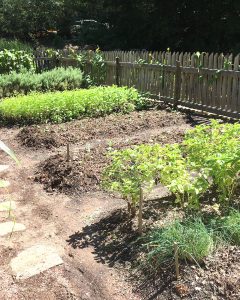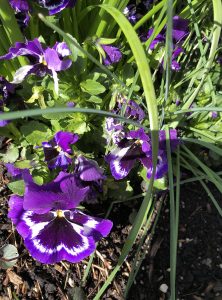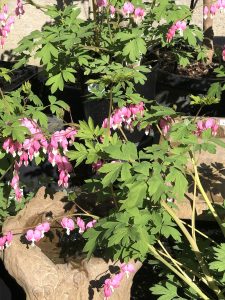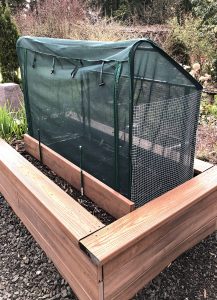
It’s seed starting time! Whether sowing vegetables or flowers, gardeners are anxious to get seeds going. But what happens when you carefully sow seeds out in your garden—or in flats in the greenhouse—and the plants don’t show up?
This month I’m following the advice of Ed Hume and his son Jeff Hume. They head up family-owned Ed Hume Seeds, in Puyallup, Washington, which has been in business since the 1970s. All their seeds are tested for germination before they are packaged. They also test them in trial gardens. As a result, they understand the main causes of seed failure.
#1. Sowing too deeply. “This is probably the number-one reason for seeds not germinating,” says Ed. If the seed packet says 1/8 of an inch depth, that is exactly what those seeds must have. No more, no less. And some seeds need light to germinate. That means no covering at all, just gently press them into place.

#2. Sowing too early. Soil temperature counts. To measure, place your thermometer in the soil before the morning sun hits it. For cool-season food or flowers, soil should be around 40 degrees. Cool-season vegetables are leafy or root crops—lettuce, carrots, potatoes. Cool-season flowers are often the early bloomers, like pot marigold (Calendula officinalis), bleeding hearts (Dicentra), and columbine (Aquilegia). The soil should be 60 degrees to plant warm-season vegetables, such as peppers and tomatoes, and flowers like spider flower (Cleome), flowering tobacco Nicotiana), or bird of paradise (Strelitzia). Of course, you can sow cool or warm in a greenhouse to get a jump on the season.

#3. Faulty watering. Too much, or too little can hinder germination, Ed says. Outdoors, keep an eye on the weather. If there are too many days in a row without rain, you may have to gently supplement. In a greenhouse, Ed suggests, “Keep the seeds moderately moist during the germination period.” Test moisture with your forefinger pushed down in the soil to the first knuckle. Very quickly you’ll learn to distinguish sodden from dry.
#4. Too much fertilizer. Fertilizer which is not watered in at sowing time or hot fresh manure in the seeding mix can inhibit seed sprouting. Ed says, “High-nitrogen fertilizers can be a big problem!” No need to supplement when you sow. Seeds carry all the nutrients they need to germinate.

#5. Hungry critters. Now, most of these top reasons for failure point to “operator error” on the part of the gardener. But Ed also credits critters for seed losses. Birds, squirrels, and soil insects can eat or carry away your crop before it starts. “Always check to see if the seeds are still in the soil,” Ed advises. If your seeds were pillaged, consider shelter in the form of netting or metal cloches. Of course, in a greenhouse, your seeds are more protected from marauders.
The Hume company stands so firmly behind their products; they will replace or refund any seeds that have not sprouted. And Ed notes, “Often packets are returned with a few seeds tucked into the corners. We always plant those. I cannot remember a single time when they did not germinate for us!”
And that’s good news for you. Follow the lead of the experts, and you’ll soon be enjoying your own seed-started plants.


